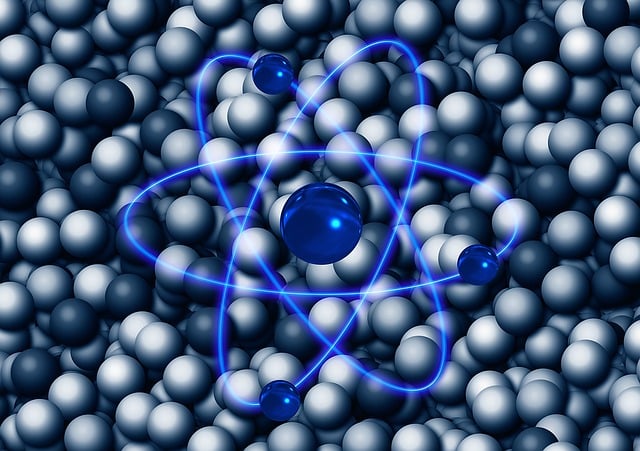SPECT imaging contrast agents, like technetium-99m and fluorine-18, enhance visualization of bodily functions for accurate diagnosis. Chosen based on specific properties, these radioisotopes highlight biological processes unseen on conventional imaging. Safe when rigorously tested, they carry risks such as nausea or skin irritation, requiring monitoring during procedures to balance benefits with potential drawbacks.
In the realm of nuclear medicine, contrast agents play a pivotal role in enhancing diagnostic accuracy. This article explores the diverse types of contrast agents used in SPECT (Single Photon Emission Computed Tomography) imaging, a crucial technique for detecting and diagnosing various medical conditions. From common types of agents to the intricate mechanisms of SPECT imaging, we delve into the selection process for specific scans, safety considerations, and potential side effects. Understanding these aspects is essential for healthcare professionals navigating this advanced diagnostic tool.
Common Types of Contrast Agents
In nuclear medicine, contrast agents play a pivotal role in enhancing the visualization of various bodily structures and functions. These agents are designed to improve the contrast between different tissues or organs, enabling more accurate diagnosis. Common types include radioisotopes and radiopharmaceuticals that are specifically chosen based on their ability to emit gamma radiation, suitable for SPECT imaging. SPECT imaging contrast agents are particularly valued for their capability to highlight specific biological processes or abnormalities not readily apparent on conventional imaging modalities.
The selection of a particular contrast agent depends on the diagnostic procedure and the organ system under investigation. For example, technetium-99m (^99mTc) is one of the most widely used radioisotopes due to its ideal physical properties and relatively short half-life, making it suitable for a range of SPECT imaging applications. Other common agents include iodine-123 (^123I) and fluorine-18 (^18F), each with unique characteristics that cater to specific medical needs. These agents contribute significantly to the field of nuclear medicine by enhancing diagnostic accuracy and enabling more effective patient management.
SPECT Imaging: Basics and Mechanisms
SPECT (Single-Photon Emission Computed Tomography) imaging is a powerful nuclear medicine technique that allows for detailed visualization of biological processes within the body. Unlike traditional X-ray CT scans, SPECT utilizes radioactive tracers as contrast agents to capture specific metabolic activities or physiological functions. These tracers emit gamma rays, which are detected by specialized cameras to construct detailed 3D images.
The mechanism behind SPECT imaging involves the administration of a radiotracer, such as technetium-99m, which has a short half-life and is quickly cleared from the body. As the tracer circulates through the bloodstream, it interacts with specific receptors or targets within the body, emitting gamma rays that are then captured by a detector. By reconstructing these emissions, healthcare professionals can generate images that highlight areas of interest, such as cancerous tumors, inflamed tissues, or organ function, providing valuable insights for diagnosis and treatment planning.
Choosing the Right Agent for Specific Scans
Choosing the right contrast agent is paramount in nuclear medicine, as it directly impacts scan quality and diagnostic accuracy. Different agents are designed to interact with specific physiological processes or anatomical structures, enabling radiologists to discern subtle variations that might otherwise be obscured. For instance, in Single Photon Emission Computed Tomography (SPECT) imaging, which is often used for functional studies of organs like the heart and brain, selecting a suitable SPECT contrast agent is crucial. These agents can enhance blood flow or metabolic activity, allowing for more detailed visualization of organ function.
The choice between blood pool vs. tissue-specific agents depends on the type of scan and the information sought. Blood pool agents, such as radioiodine or technetium-99m, are ideal for assessing perfusion and blood flow patterns, while tissue-specific agents like gallium-67 or fluorine-18 have higher affinity for certain tissues, aiding in the detection of metabolic abnormalities or tumors. Understanding these nuances ensures that the chosen contrast agent complements the diagnostic objectives of the scan, delivering precise and actionable insights.
Safety Considerations and Side Effects
In nuclear medicine, safety considerations are paramount when employing contrast agents for SPECT imaging. These agents, designed to enhance visual clarity and enable more accurate diagnoses, must undergo rigorous testing and regulatory approval to ensure their security for patient use. The primary concern revolves around potential radiation exposure and any adverse reactions. Fortunately, modern contrast agents are meticulously formulated to minimize risks.
While generally well-tolerated, side effects can occur, especially with excessive administration or in individuals with pre-existing conditions. Common temporary symptoms include nausea, vomiting, and skin irritation at the injection site. More severe but rare reactions may involve allergic responses. Regular monitoring during and after procedures is essential to promptly address any issues, ensuring patients receive the benefits of SPECT imaging while mitigating associated risks.
In nuclear medicine, selecting the appropriate SPECT imaging contrast agent is key to enhancing diagnostic accuracy. By understanding different types, their mechanisms, and specific scan requirements, healthcare professionals can ensure safe and effective procedures. Awareness of potential side effects and ongoing safety considerations further strengthens the responsible use of these agents, ultimately contributing to improved patient outcomes.
